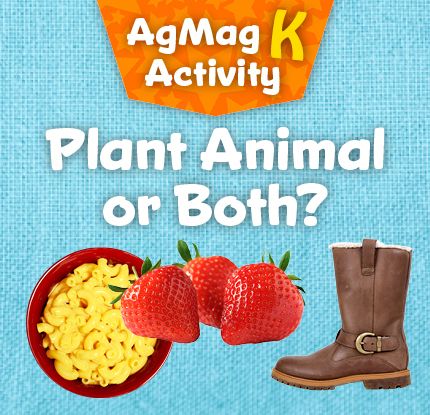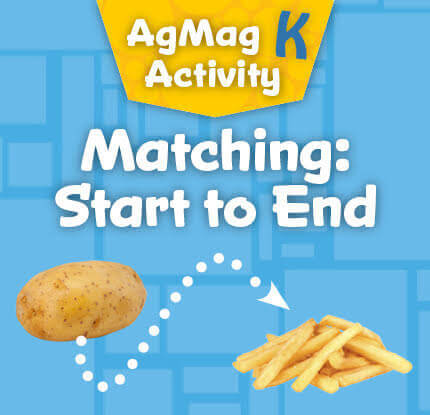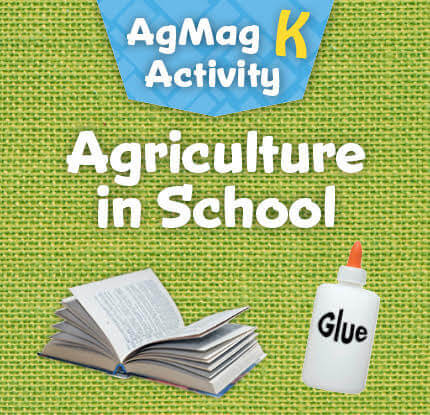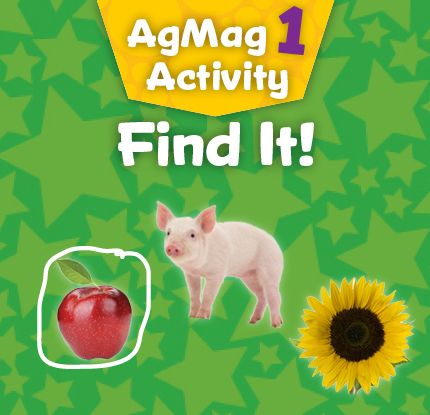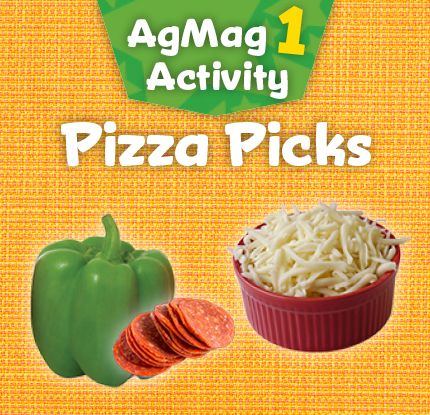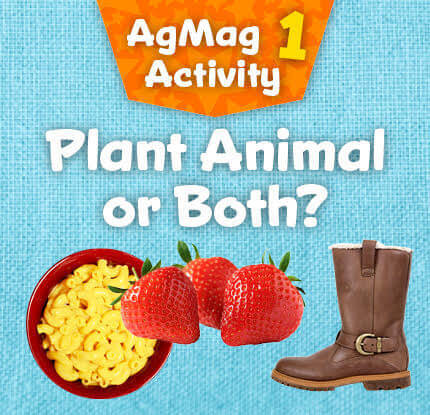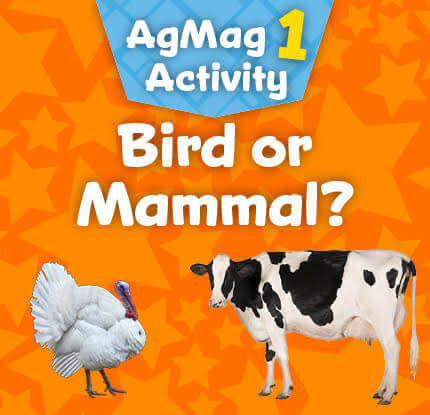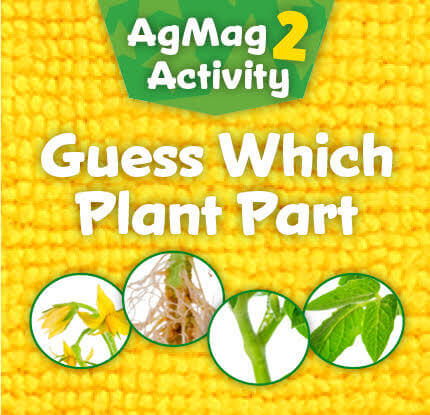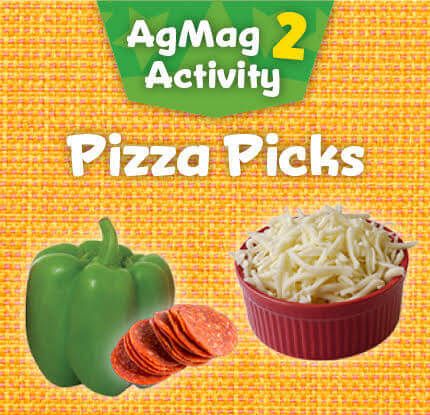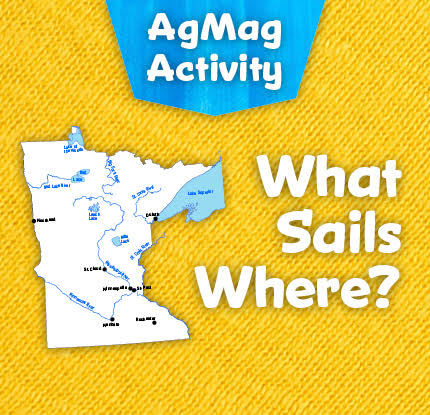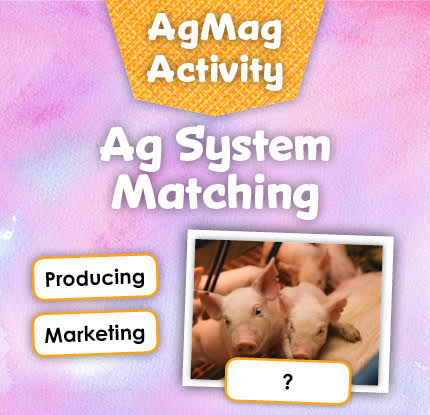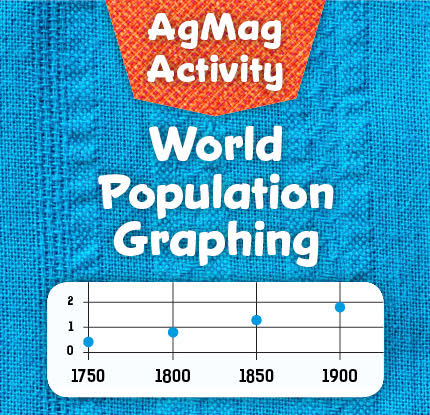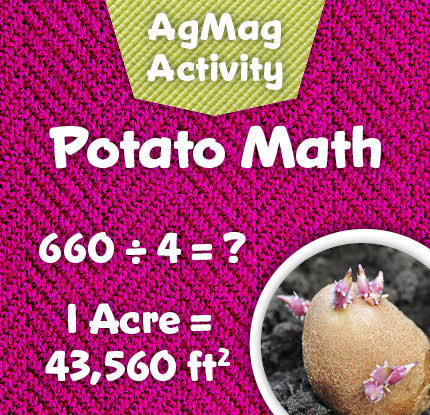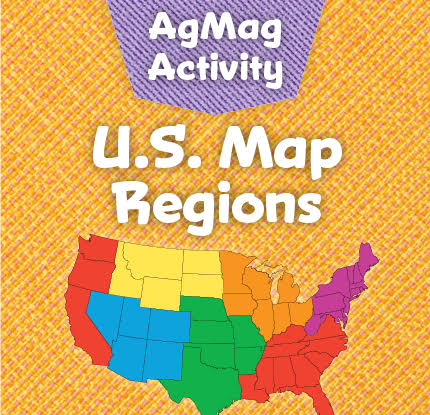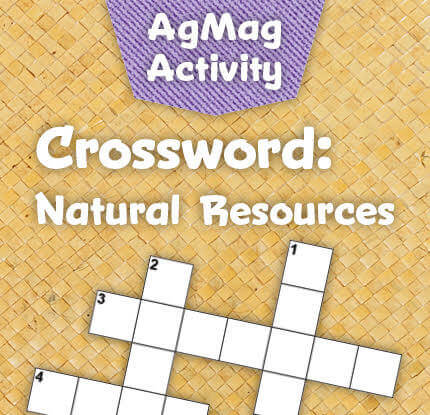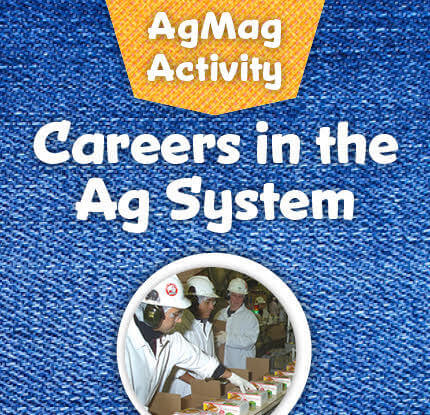AgMag Teacher's Guide Winter 2016-17
Why Ag in the Classroom?
Agriculture means survival. Over time, fewer and fewer people have close contact with farming and the total agricultural sector. They’re not aware of their own and society’s total dependence on agriculture. People must be agriculturally literate in order to make responsible decisions affecting this giant lifeline.
Teaching students to be agriculturally literate brings their learning to life. Helping students understand the farm-to-table connection is important in our consumer-driven society. That’s what the student Minnesota AgMag Series is all about.
Integration Ideas
Social Studies
- Use the information from Minnesota Agriculture: Big Changes in Minnesota Agriculture (page 7) as the start to creating a historical timeline that illustrates the role of agriculture in Minnesota History. (There is additional history information from the Fall 2016 issue at MNAgMag.org.)
- Focus on a Minnesota crop such as corn, soybeans, or dairy, and have students research how production techniques have changed throughout history. Examples include: machinery and equipment, research and development of new genetics, herbicides and pesticides, soil and water improvement, and conservation techniques.
English Language Arts
- Ask students to identify key ideas and details and build their vocabulary through the AgMag’s informational text.
- Use agriculture as an inspiration for creative writing activities and group discussions. Ideas: Stories from the points of view of plants or animals that depend on humans; predictions for agriculture in 2050 (or future years); letters to children in other countries with descriptions about agriculture here and questions about agriculture there.
Science and Math
- Identify the STEM involved in producing milk and dairy products in Minnesota (pages 4-5), plus having the students complete the Milk Math activity.
- Utilize and expand the graph and chart on page 8.
Glossary
Some words in your AgMag may be unfamiliar to your students. These words often appear in bold type or in italics. Many are defined in the articles, and they’re also included in modified form in the student pages at MNAgMag.org. Words you may wish to pre-teach are:
AGRICULTURE SYSTEM: The steps required to get an agricultural product from the farm to the consumer. There are six steps that are usually involved: Producing, processing, distributing, marketing, consuming, and disposing.
CELLULOSE: Found in plant cell walls. It is the main building material in plants. Depending on the plant, it can be very tough.
CONSUMERS: Someone who buys and uses goods. The process of buying and using those goods is called “consuming.”
DISPOSING: Putting unused or waste products into recycling, compost, or garbage processes.
DISTRIBUTING: Getting the processed products to places like grocery stores and farm markets.
FERMENTATION: The breakdown of a substance by bacteria, yeast, or other microorganisms.
FIBROUS MATERIALS: Things, including plants, that contain a great deal of fiber. This can make them difficult to digest.
HOMOGENIZED: The process that breaks fat in milk into smaller droplets so they stay in the milk, rather than floating to the top.
HYBRID: A product that is created by combining two (or more) different elements.
INTERDEPENDENT: Two or more people or things that are dependent on each other.
MARKETING: Advertising agricultural products in places like TV and radio ads, magazines and newspapers, and the internet to help people know about them.
MICROBES: A microorganism that can cause fermentation.
PASTEURIZED: A process of heating milk to a certain temperature for a set period of time in order to kill harmful bacteria.
PROCESSING: Changing the raw materials into things we eat, wear, and use.
PRODUCERS: Someone who grows or develops goods to provide or sell to others. The process of growing or developing is called “producing.”
RAW MATERIALS: A basic material that has not yet been processed into something else.
NATURAL AND RENEWABLE RESOURCES: Resources that can be replaced or grown again if they are used.
Minnesota Academic Standards Connection
|
Subject |
Standard Code |
Benchmark |
|
Social Studies |
4.2.3.3.1 |
Describe the productivity of a resource and describe ways to increase it. |
|
Social Studies |
4.3.2.3.1 |
Locate and identify the physical and human characteristics of places in the U.S., Mexico, and Canada. |
|
Social Studies |
6.2.4.5.1 |
Describe the movement of goods and services, resources and money through markets in a market-based economy. |
|
Social Studies |
6.3.4.10.1 |
Describe how land was used during different time periods in Minnesota history; explain how and why land use has changed over time. |
|
Social Studies |
6.4.4.23.2 |
Identify the major Minnesota political figures, ideas, and industries that have shaped or continue to shape Minnesota and the United States today. |
|
Science |
5.4.1.1.1 |
Describe how plants and animal structures and their functions provide an advantage for survival in a given natural system. |
|
Math |
5.2.1.1 |
Create and use rulers, tables, spreadsheets, and graphs to describe patterns of change and solve problems. |
|
Math |
6.1.3.4 |
Solve real-world and mathematical problems requiring arithmetic with decimals, fractions and mixed numbers. |
|
English Language Arts |
6.5.1.1 |
Cite textual evidence to support analysis of what the text says explicitly as well as inferences drawn from the text. |
AgMag Cover (Social Studies)
- What makes “Agriculture, the Land, and You” a good title for this page?
- (Each of the products mentioned in the article and many shown in the photos started out with a connection to the land, the soil. They end up being used by people.)
- What connections to agriculture do you see in these photos?
- (Food [like soybeans and the many kinds in the shopping cart], sports equipment [the leather glove is made from animal hide, and the inside of the ball contains wool])
- Why are consumers and producers interdependent?
- (Because producers need people to buy their products, while consumers need producers to sell them the products they’ve grown and processed.)
Student Page 2 (Social Studies, Economics, Science)
- How many things in your classroom came from agriculture?
- What have you eaten or worn today that came from an animal? A tree or plant? The soil? Which came from beef or dairy cattle? From pigs? Corn or soybeans?
- Why do we say agriculture depends on natural and renewable resources?
- (The agricultural products that are produced, processed, and distributed all are dependent on soil, sun, air, and water in some way. Animals and plants are considered renewable resources.)
- What foods do NOT come from plants and animals?
- (Mushrooms and yeast are fungi, not plants.)
- Have you heard the phrase “amber waves of grain” before? What does it mean?
- (It’s from the song “America the Beautiful”. It was written by Katharine Lee Bates, an English professor who was inspired to write it after taking a train across the U.S. Seeing extensive grain fields while riding through Kansas inspired the phrase, which was a tribute to America’s agricultural strength.)
Activity Answers
Matching and Naming
Top row, left to right:
6. Disposing
1. Producing
5. Consuming
Bottom row, left to right:
3. Distributing
4. Marketing
2. Processing
Discussion
Products with more steps use more energy, especially in processing. Example: Fresh potatoes are picked, cleaned, graded, packaged, and ready for consumers. Potato chips add slicing, baking or frying, seasoning, and inspection to the system.
Sun, air, water, and soil are the resources from which all agricultural products develop.
Student Page 3 (Social Studies, Economics, Science)
Awesome Alfalfa!
- Explain the four parts of a cow’s stomach and how they work together. (The rumen, which is the largest part, is a storage and fermentation vat for feed. Microbes in the rumen help to digest or ferment food, breaking down the cellulose [in the glossary] from all of the fibrous materials cattle eat; the reticulum, which traps things the cow should not have eaten, like rocks, to keep them from continuing through the digestive tract; the omasum, which has leaves similar to pages in a book that help filter the food, squeeze out the water, and break down the cud; and the abomasum, which sends important nutrients into the cow’s body and sends everything else through the intestines. The abomasum is the part most similar to a non-ruminant’s stomach.)
- In Did You Know, the fact that today’s dairy farms produce three times as much milk as farms in the past with half as many cows is noted. Some reasons for that appear on pages 4-5, but ask your students what might have caused the increase in productivity with fewer cows. (Increased technology, such as automated milking machines, improved genetics, and robots)

Student Pages 4 and 5 (Science, Social Studies, Economics)
Dairy Products: From the Cow to You
- Why do so few farmers milk cows by hand anymore? (It’s very inefficient; milking machines and robots are much more efficient and can allow the cow to produce more milk.)
- Why is pasteurization important? (Unpasteurized milk can spoil more quickly, and even worse, it can contain bacteria that’s bad for humans, like Salmonella, e.coli, and listeria.) For additional information about Louis Pasteur, the scientist who discovered and developed pasteurization, check out http://mnagmag.org/archive/agmag-archive/agmag-2016-2017/agmag-winter-2016-2017/agmag-winter-2016-2017-online-edition/the-agriculture-system-for-dairy-products/, which has more detailed information about Pasteur and his work.
- Where are different places you can find milk or products made from milk? (Grocery stores, farm markets, food co-ops, convenience stores, school cafeterias, school concession stands, ice cream shops)
- What ads have you seen for dairy products? Do you think the ad was aimed at you or your parents? Why?
- What kinds of dairy products do you consume each week? For additional information about how milk is made into other dairy products, please see http://mnagmag.org/archive/agmag-archive/agmag-2016-2017/agmag-winter-2016-2017/agmag-winter-2016-2017-online-edition/many-foods-start-as-milk/ for expanded content and resources.
- Most dairy products are sold in packaging that has either a “sell by” or a “use by” date. There is sometimes other information on those labels as well, including where the dairy product came from. Visit http://mnagmag.org/archive/agmag-archive/agmag-2016-2017/agmag-winter-2016-2017/agmag-winter-2016-2017-online-edition/why-are-there-numbers-on-my-milk/ to find more information and videos to explain these ideas to your students.
Robot Milkers!
Right now there are 88 farms with a total of 234 robots in Minnesota. One robot can milk 60 cows every 24 hours. They can help by allowing farmers to spend less time overseeing the milking and more time on their farm business. Robots are expensive, but they have significant advantages for farmers. They allow for more specialized care of cows; how much milk a cow produces determines how much feed is given, how many times a day the cow will be milked (at least twice, but up to seven times a day), can give an early warning if the cow is ill, and gives the cow a consistent daily routine. Cows are creatures of habit—they like each day to be like the day before, and the less stress on the cow, the more productive it will be. Some of the most advanced robots can take over 100 measures (weight, temperature, and pounds of milk produced, for example) each time a cow is milked. This makes the farm much more efficient and don’t require as much direct attention from the farmer as more traditional milking machines. That allows the farmer to put more time into other parts of the farm’s business—and spend more time with the family.
Milk Math Answers
|
Percent |
Decimal |
Fraction | |
|---|---|---|---|
|
Hay |
70 |
.7 |
7/10 |
|
Silage |
20 |
.2 |
1/5 |
|
Soybean Meal |
10 |
.1 |
1/10 |
Pounds of hay: 42
Pounds of silage: 12
Pounds of soybean meal: 6
Student Page 6 (Social Studies, Science)
- What does the population trend of the future (more people in cities and less-developed countries) mean for agriculture?
- (Production must keep increasing in order to feed everyone. Transportation and distribution will be even more important than they are today. Growing urban populations will use resources in greater quantities than the rural population which produces their food. Conserving land, water, and energy resources and using new technologies to increase production will grow in importance. Marketing new products will continue to be a growing business.)
- Because of war, drought, political instability, high food prices, poverty, and joblessness, hunger now affects one in six people in the world. (Estimate is from the United Nations.) The main reasons for hunger in the United States are caused by poverty and unemployment. How can we help hungry people?
- (Donate to food shelves. Explore local resources.)
- Why might food grown in a country not be easily available to local people?
- (Exporting food is big business in many parts of the world. If money can be made by selling locally grown food to others, it may not be readily available to local people.)
Activity Answer
Use an atlas to be sure students drew the correct connections.
Student Page 7 (History, Social Studies)
Big Changes in Minnesota Agriculture: 1900-1955
This article notes that hybrid seeds, livestock vaccines, and commercial fertilizers were big developments in this time period. Explain what these are before beginning the discussion below.
- Hybrid seeds: Seeds produced by cross-pollinated plants. This is usually done to merge positive characteristics of different plants, either to increase crop yield or to improve disease resistance.
- Livestock vaccines: Just as with humans, vaccines were developed to help reduce incidence of disease in livestock, making for healthier herds, and also larger herds, since they were not as likely to succumb to disease.
- Commercial fertilizers: Materials developed to add more nutrients to the soil or plant tissues, helping plants to get all the nutrients needed to grow a robust crop.
- What does the population trend since 1950—more people in cities—mean for agriculture?
- (More farmland is taken out of production and developed for urban uses. There are more consumers than producers. Production must keep increasing in order to feed everyone. Transportation and distribution of food from farm to table are even more important. Growing urban populations use more food, clothing, fuel, water, and other resources than rural areas. Conserving land, water, and energy resources and taking advantage of new technologies to increase food production will be even more important in the future. Developing, marketing, advertising, and selling new products becomes bigger business than ever.)
- Now that you know what hybrid seeds are, why do you think hybrids are so important in crop production?
- (A hybrid is developed from crossbreeding and cross-pollination of two different plants to make a new and improved plant. For example, plant breeders develop hybrids that can resist drought, grow in harsher weather, produce greater yields, and so on. Hybrids also give us a variety of new products. One example is the SweeTango apple, a hybrid of Zestar and Honeycrisp apples. The University of Minnesota is a national leader in developing hybrid apples.)
- For more information about Minnesota’s agriculture and farming history, visit http://www.mnagmag.org/archive.
Student Page 8 (Social Studies, Math)
Activity Answers
Talking Corn…and Soybeans
Use a United States map to check the students’ placement of corn and soybean states.
What can you tell us about where corn and soybeans are grown? They are often grown in the same states. (This region is commonly called “the corn belt” because it includes most of the top producers of corn. And with corn comes soybeans. The region has favorable climate and terrain, rainfall, and fertile soils for producing both of these commodities. Abundant corn and soybeans make the region a leading producer of livestock, too.)
2015 Top Soybean and Corn States
The workbook lists both the top soybean and top corn states in the U.S. from 2015, but several states made the top 10 list for both. Only Arkansas, Kansas, North Dakota, and Wisconsin did not make both lists. That means that Illinois, Indiana, Iowa, Minnesota, Missouri, Nebraska, Ohio, and South Dakota are all tops in soybeans and corn.
World Population Graph
The population growth will be much faster in less developed countries.
Reproducible Answers
Why Are They Hungry?
Across:
- Transportation
- Crop
- Drought
- Spoiling
Down:
- Stealing
- Wars
- Government
- Poverty
- Storage
- Trade
- Processing
- Floods
- Pests
The two main causes of hunger in the United States
- Poverty
- Unemployment
Go Figure
- 25 pods X 3 beans = 75 beans
- There are about 90,000 beans in a bushel.
Corny Scramble
- Corn flakes
- Ice cream
- Soda
- Peanut butter
- Ketchup
- Salad dressing
- Jelly
- Marshmallow
- Margarine
- Taco chips
Pop!
- As the kernel is heated, the water inside gets hot, expanding and building pressure. The harder surface around the soft starchy center finally explodes. Popcorn!
Smoothie question
- Tofu
Corny Counting
- An ear of corn has an even number of kernel rows. Average number of kernels is 600-800 per ear.



